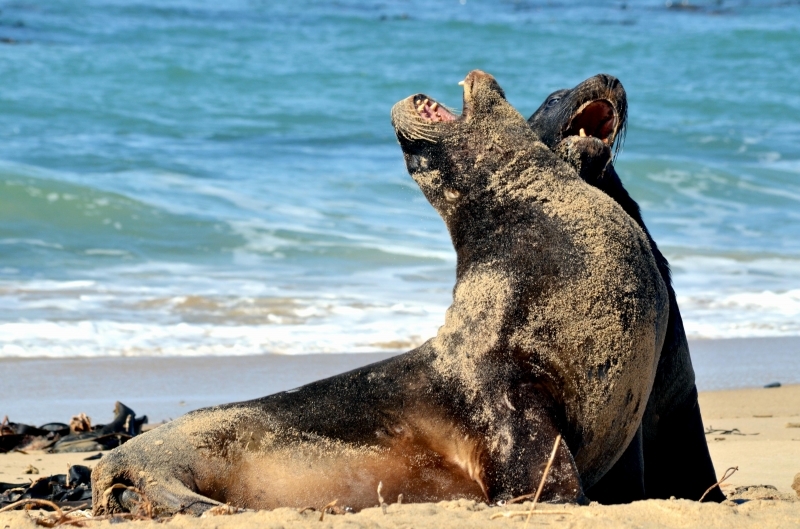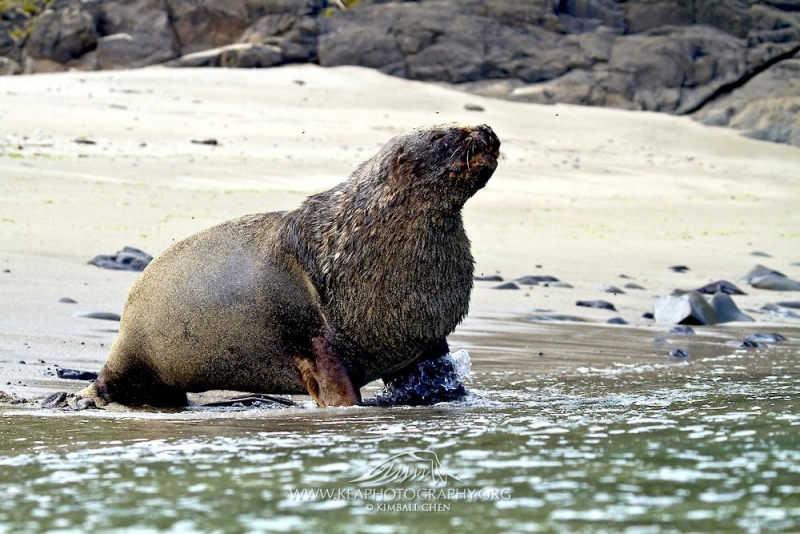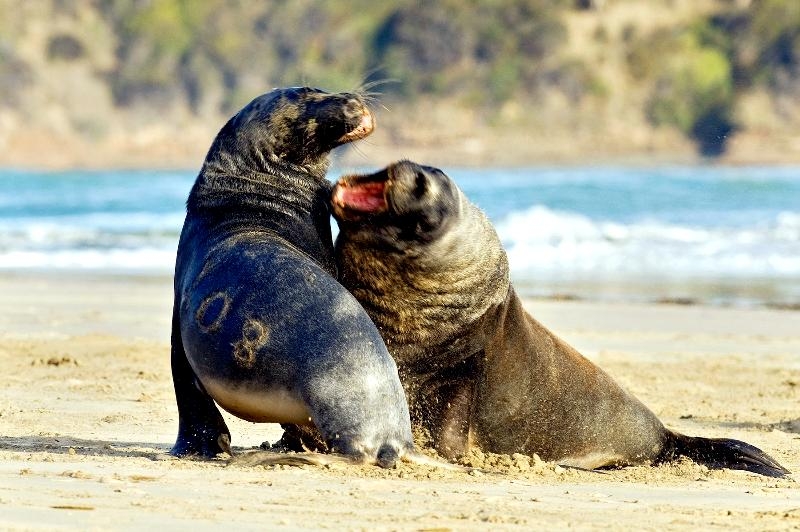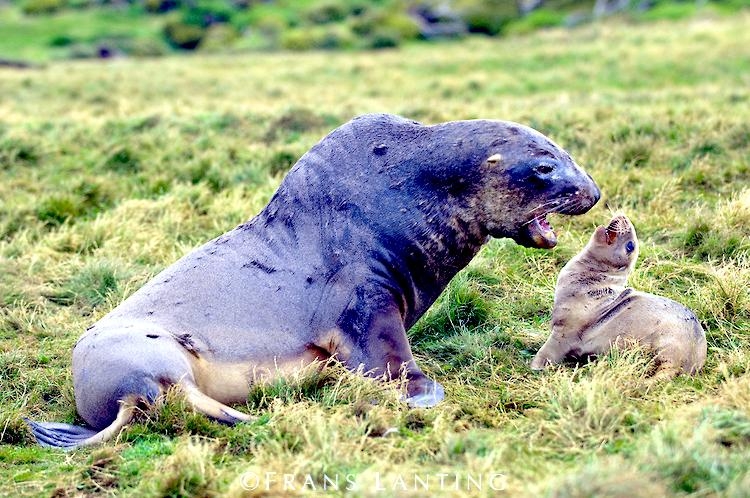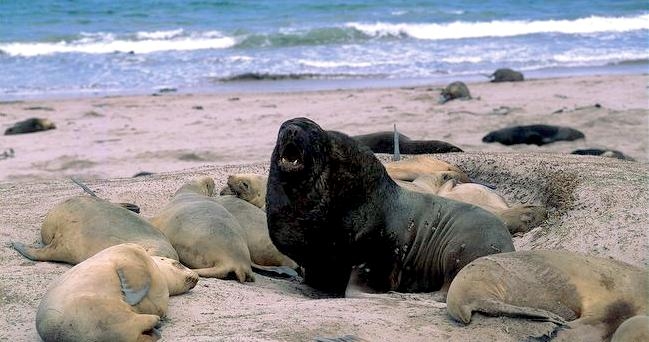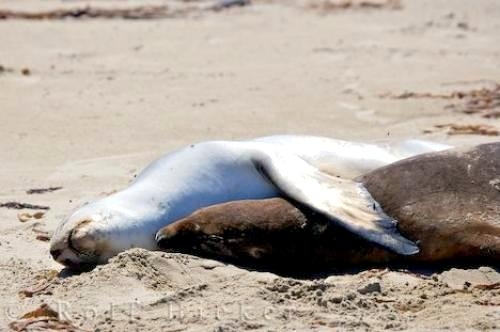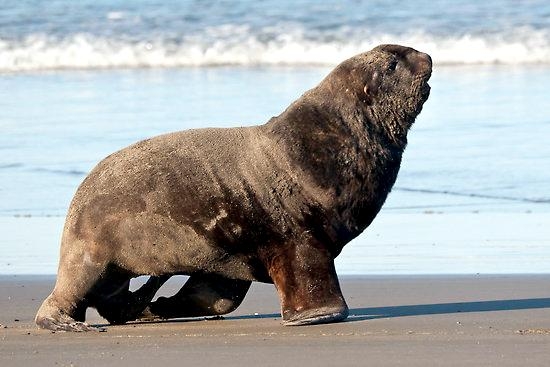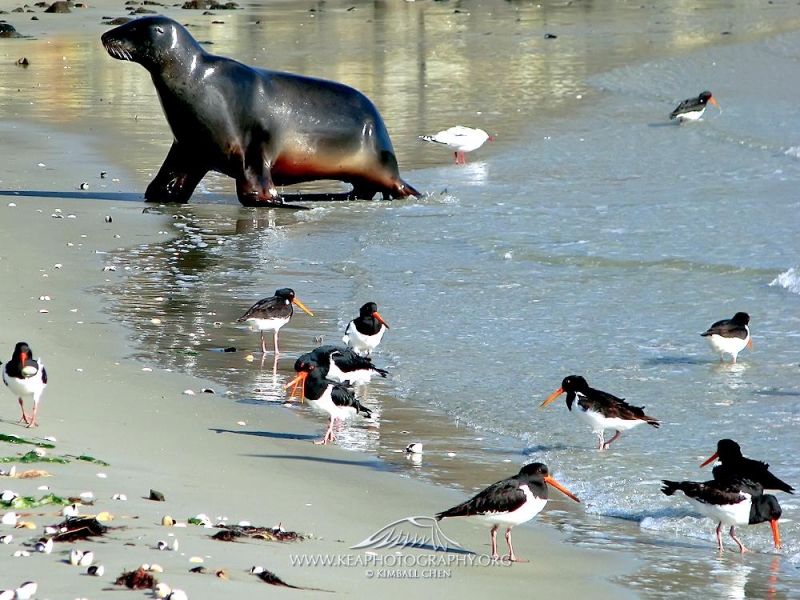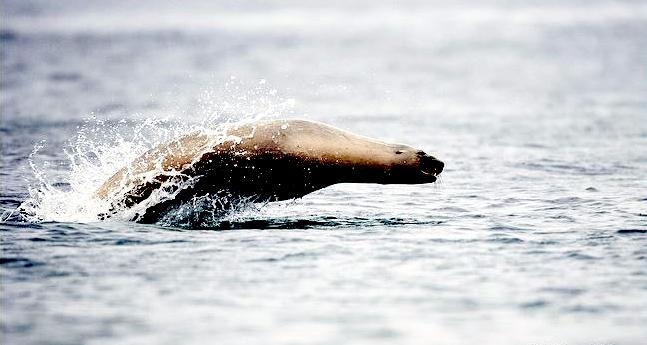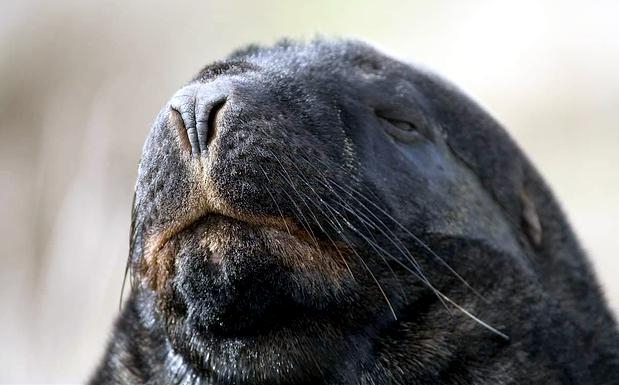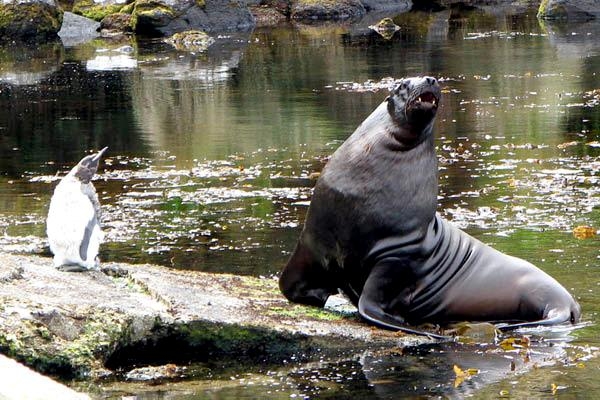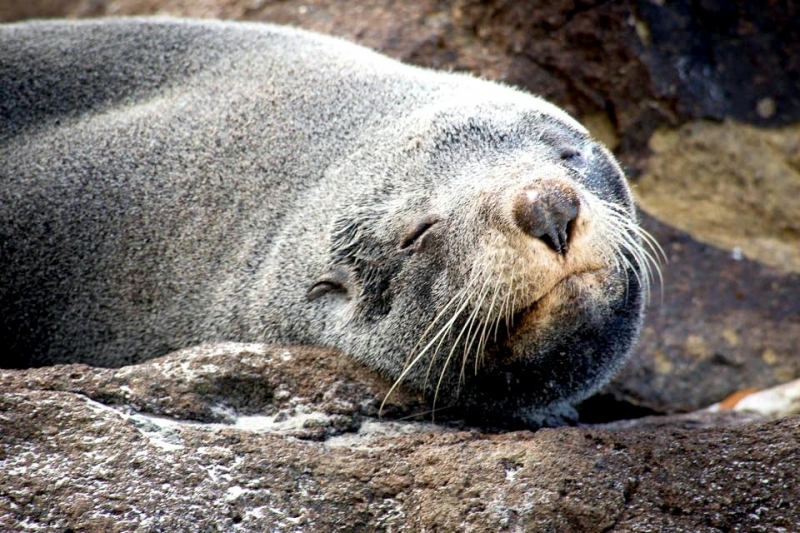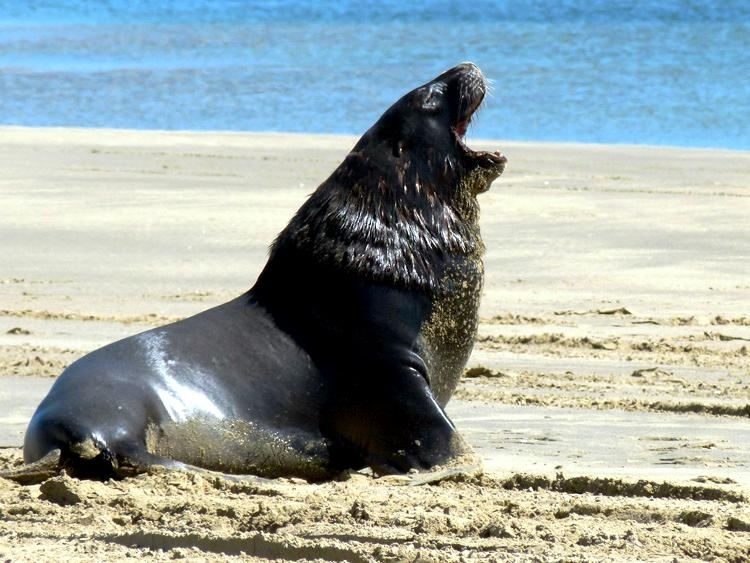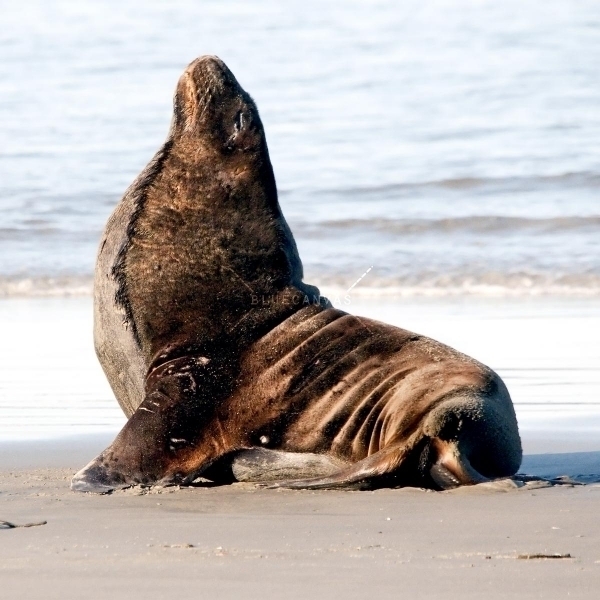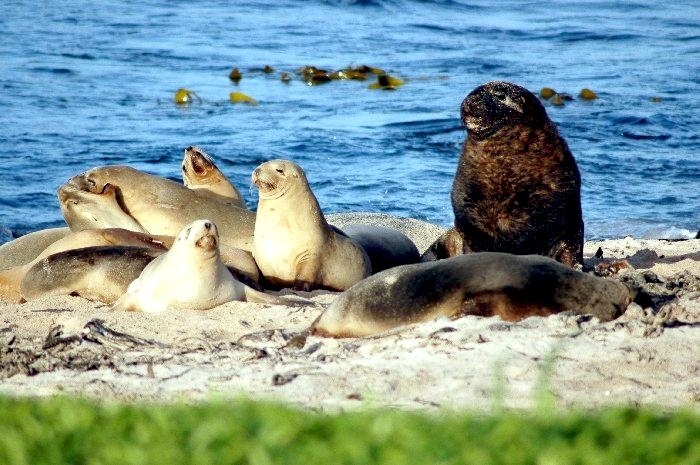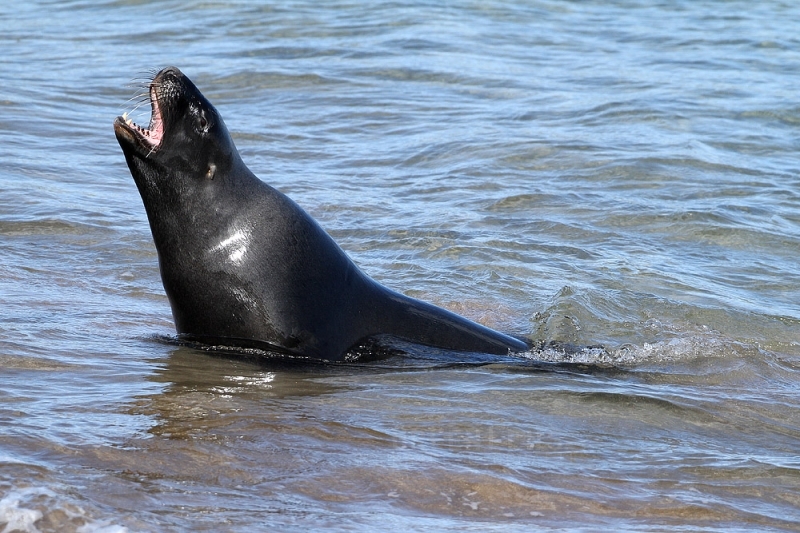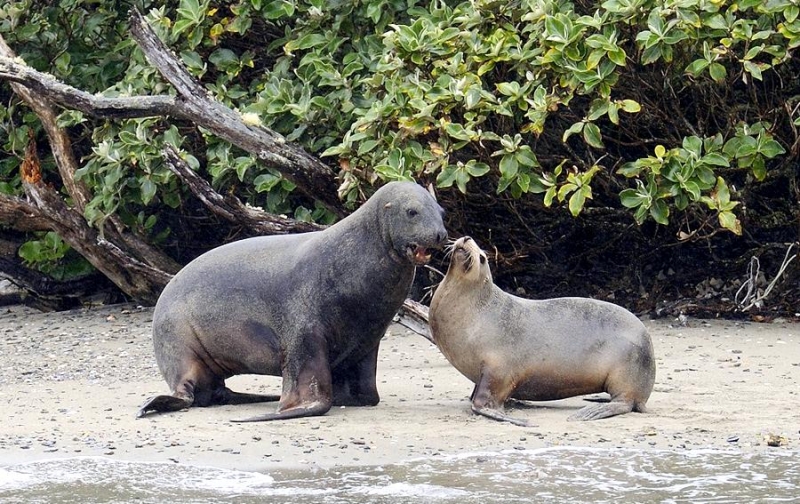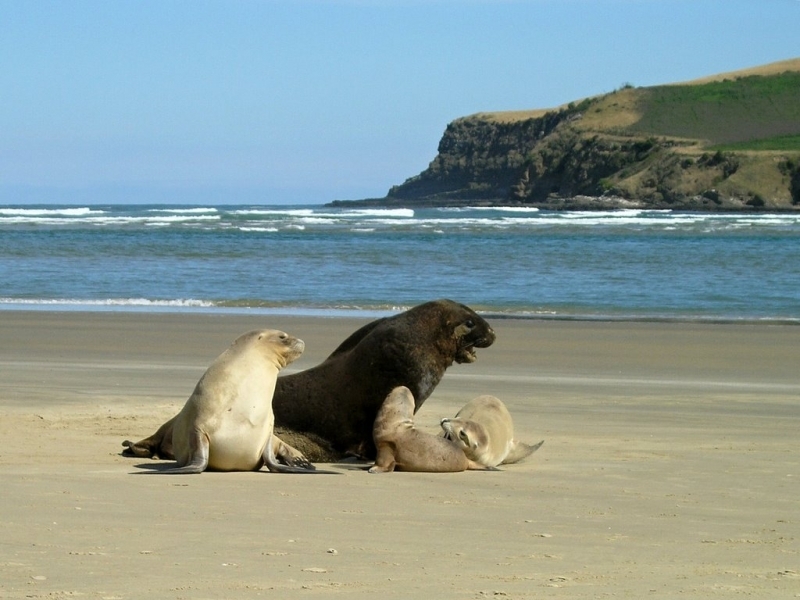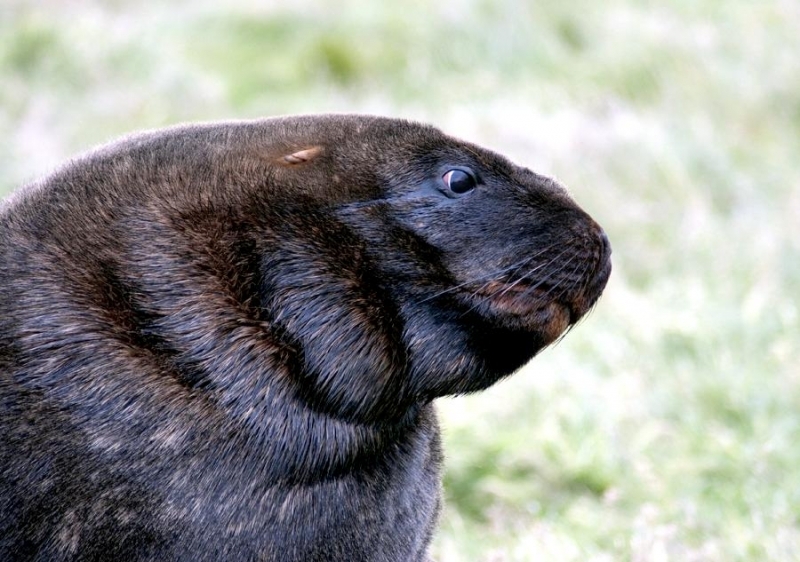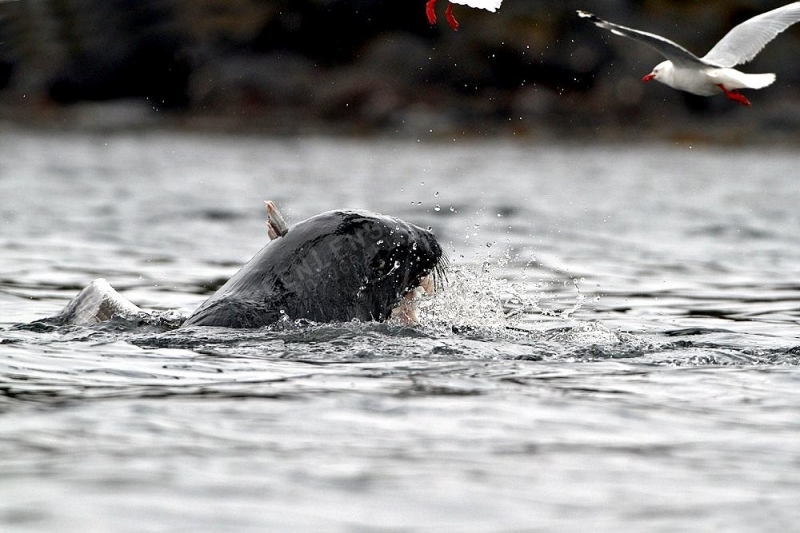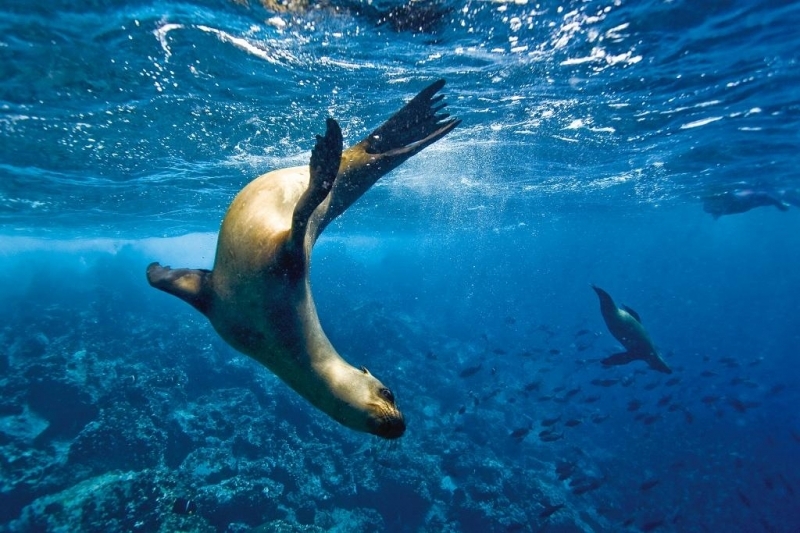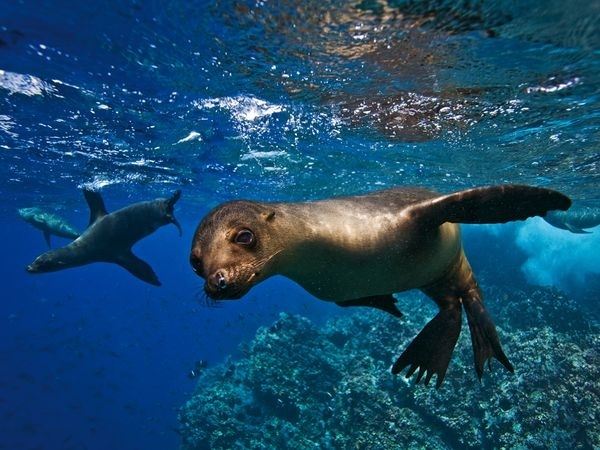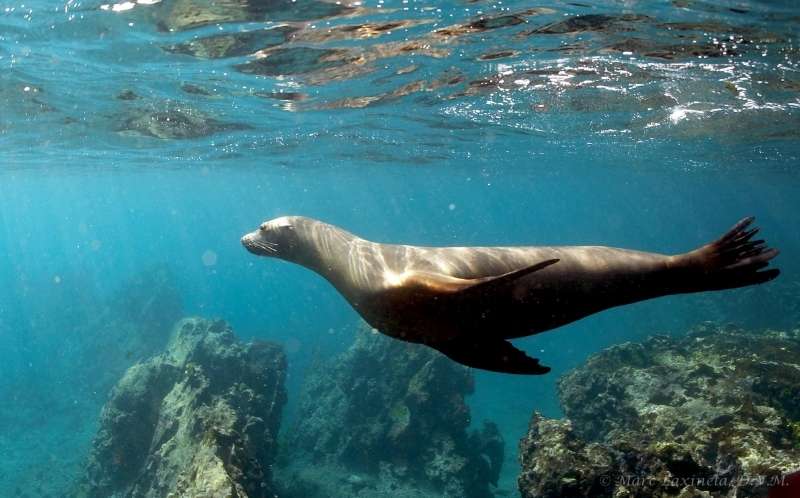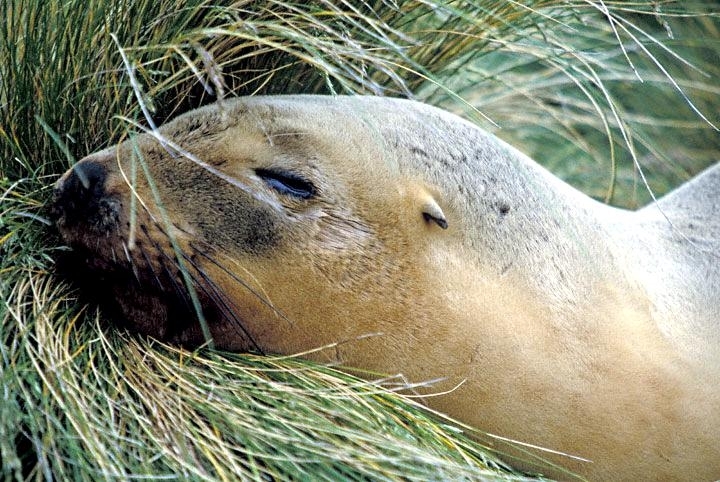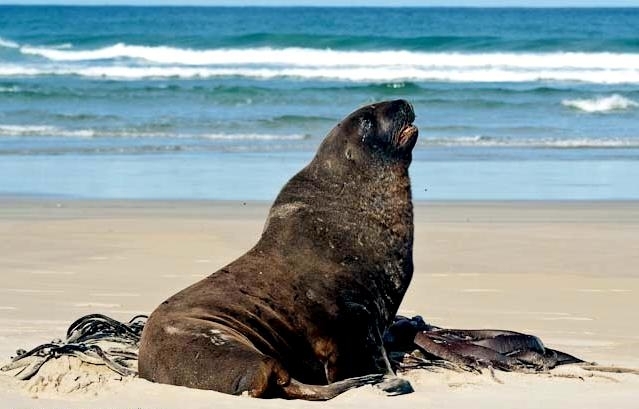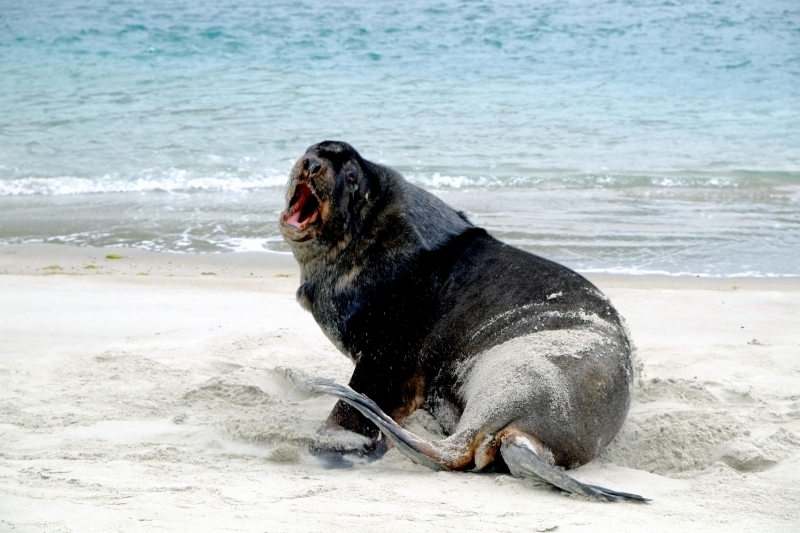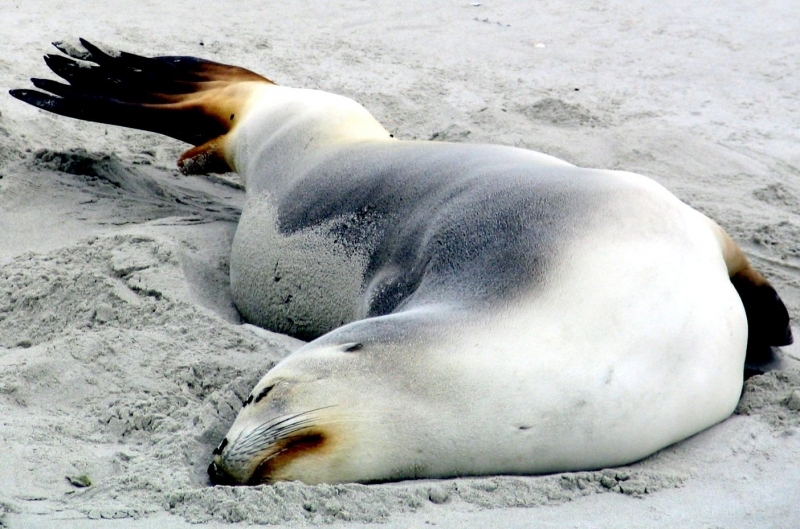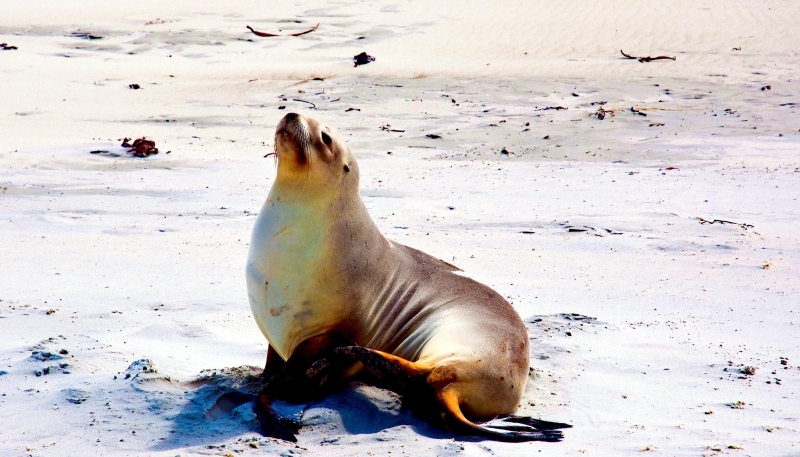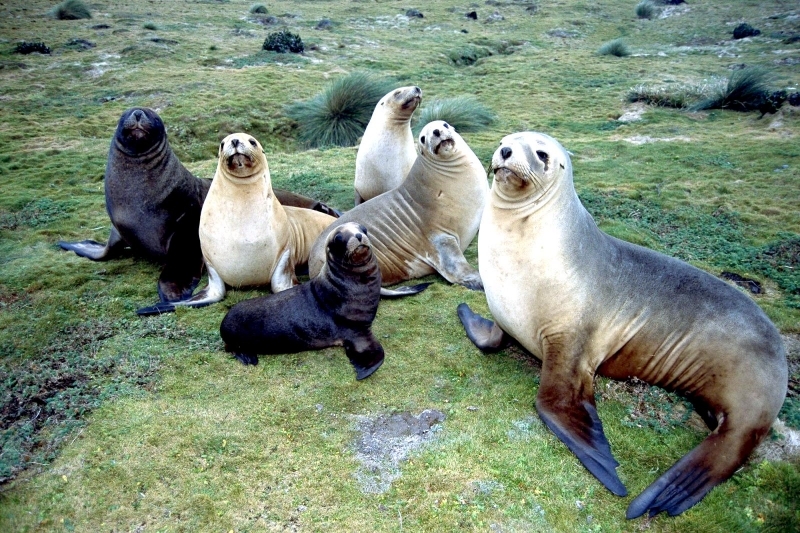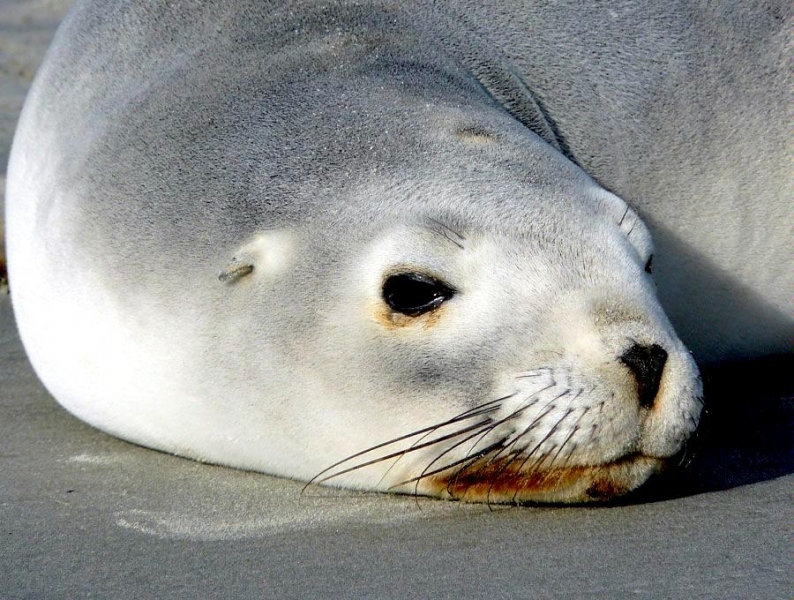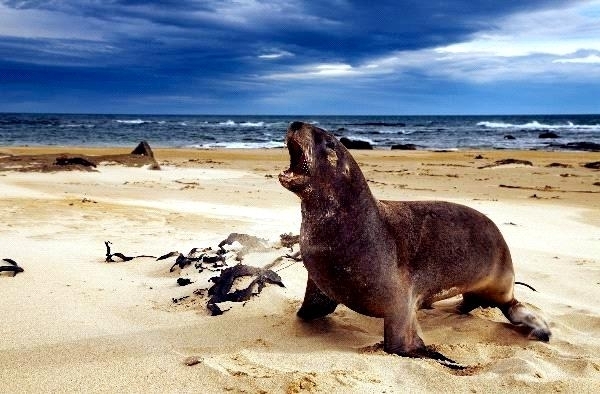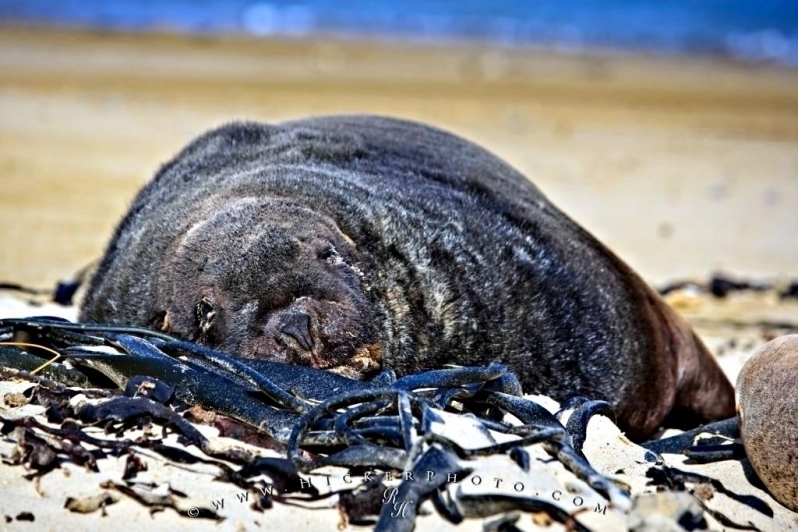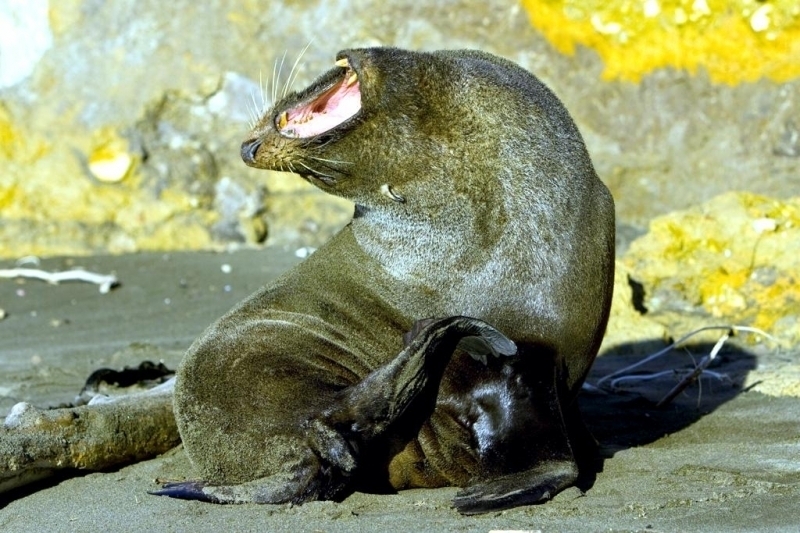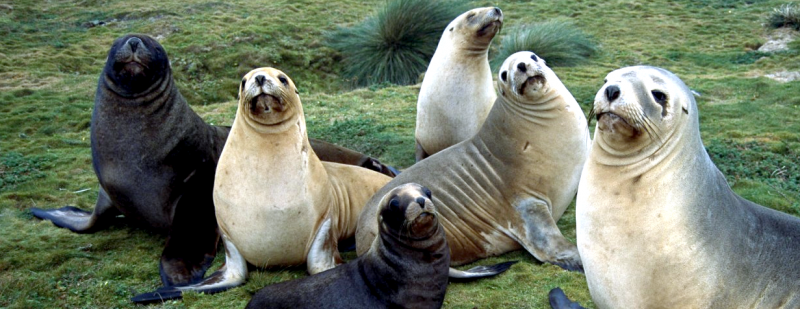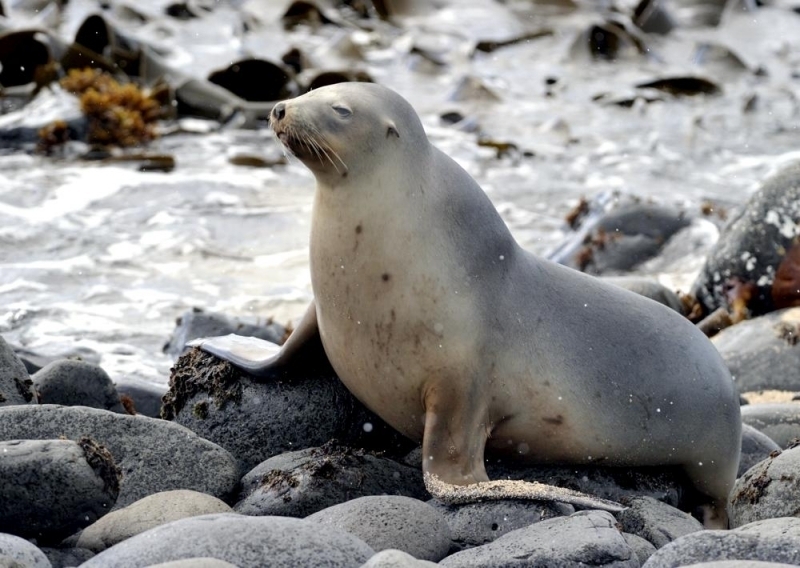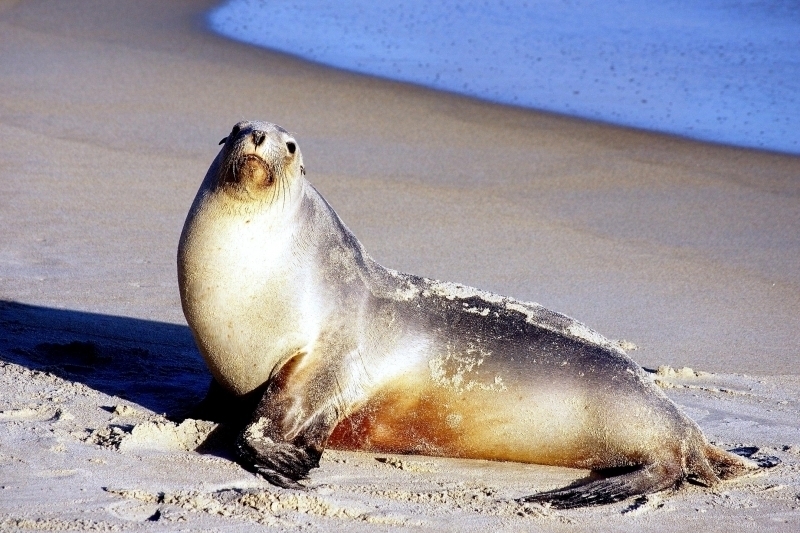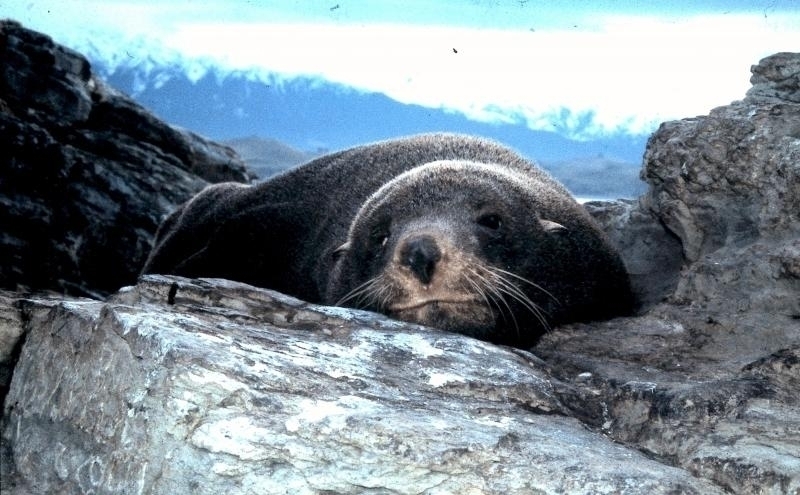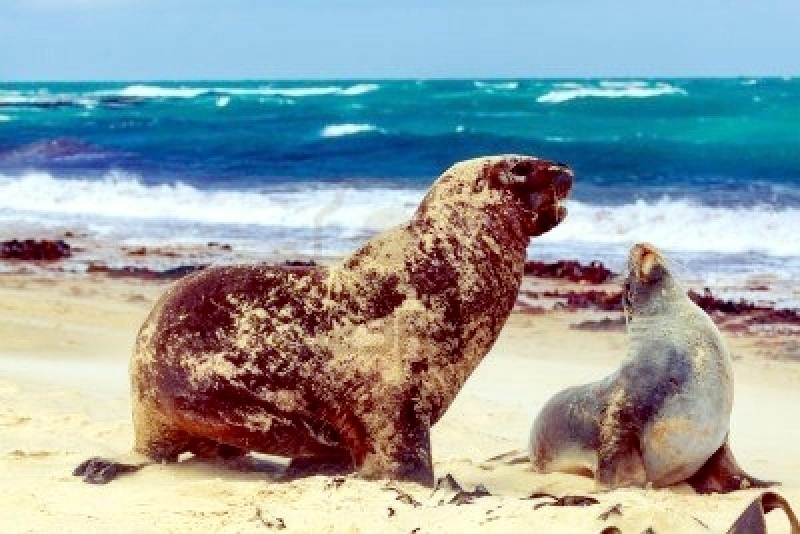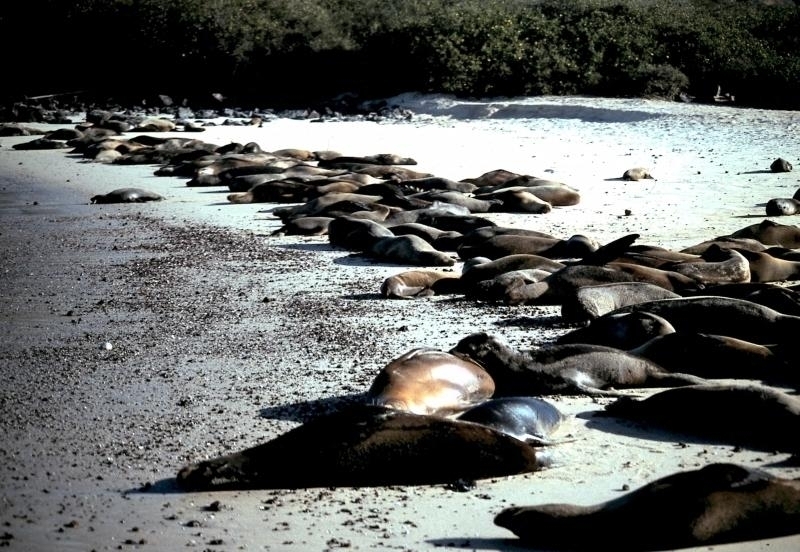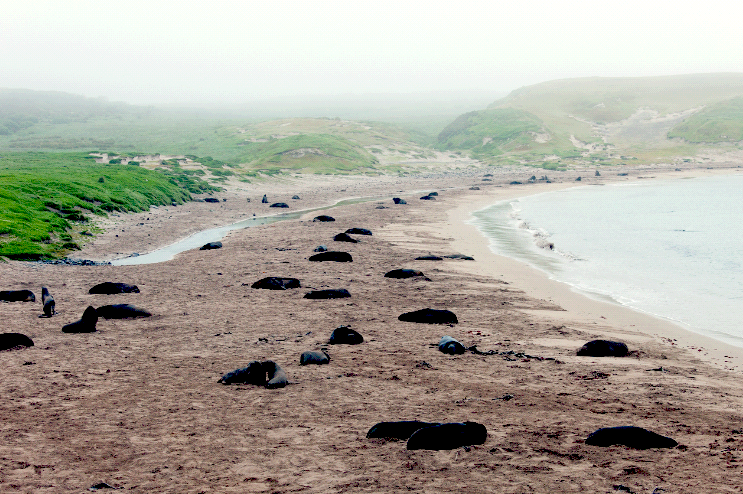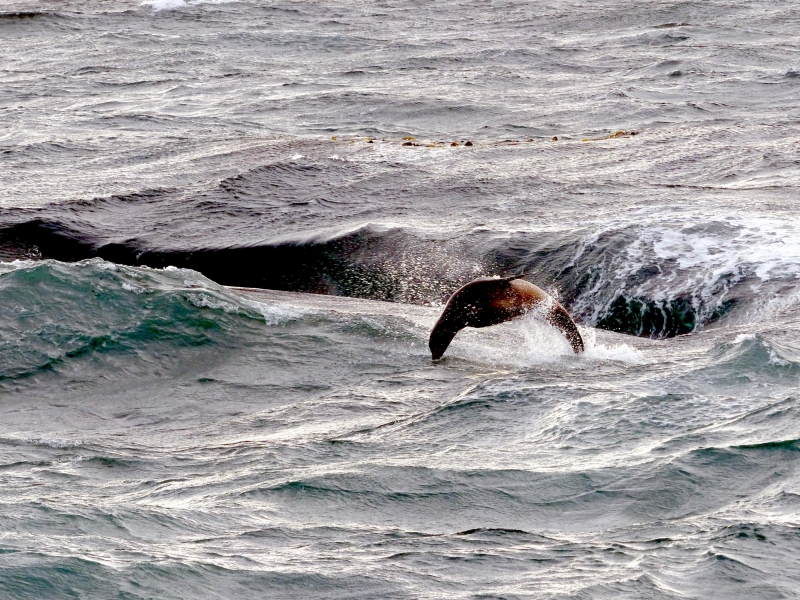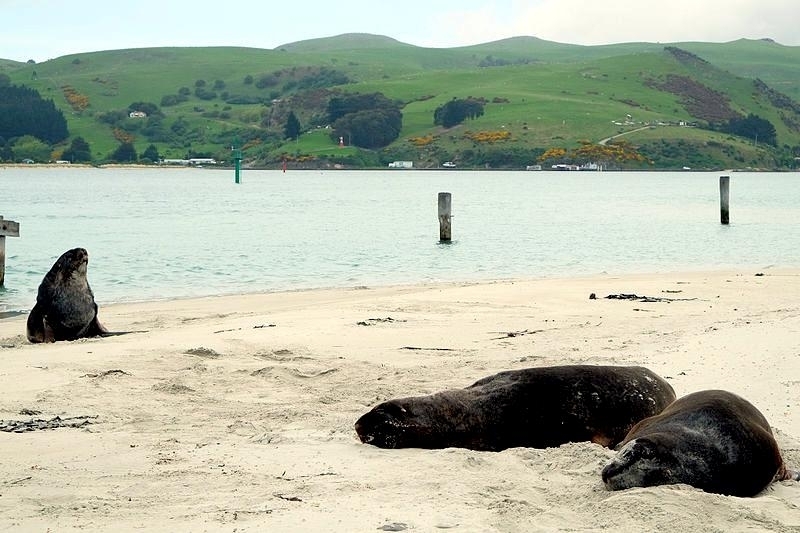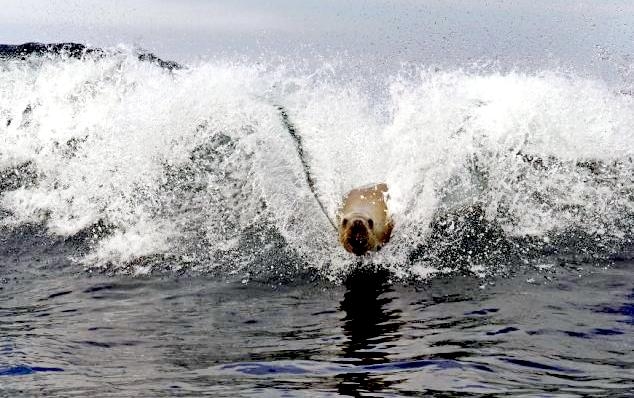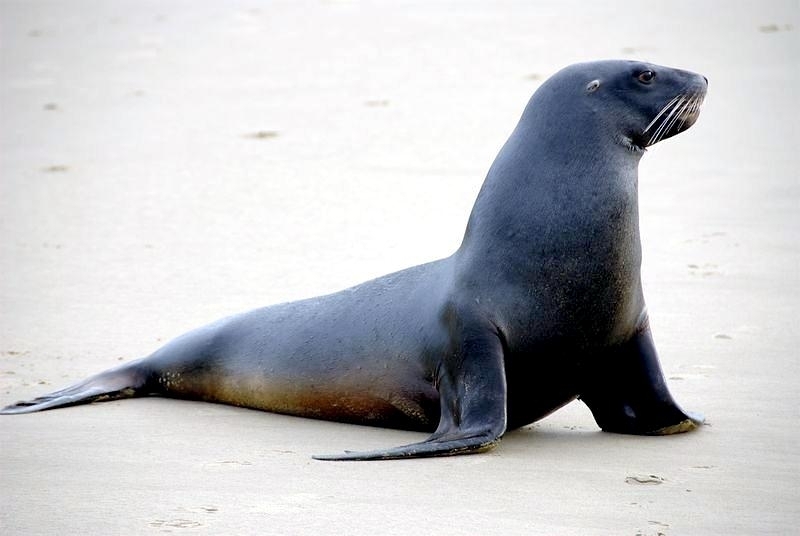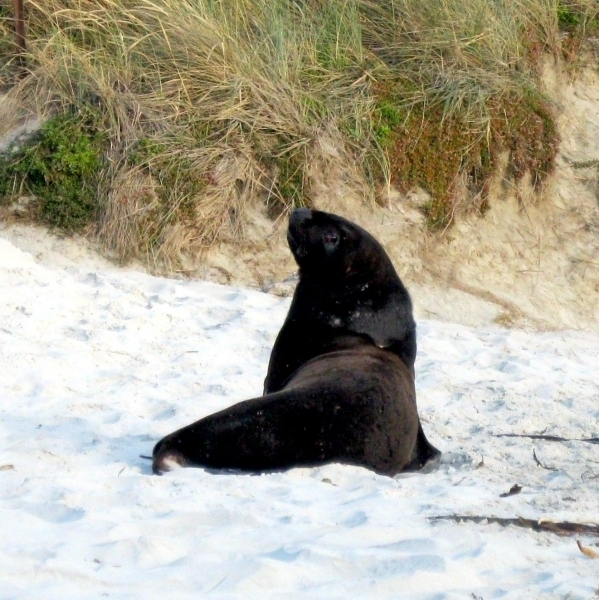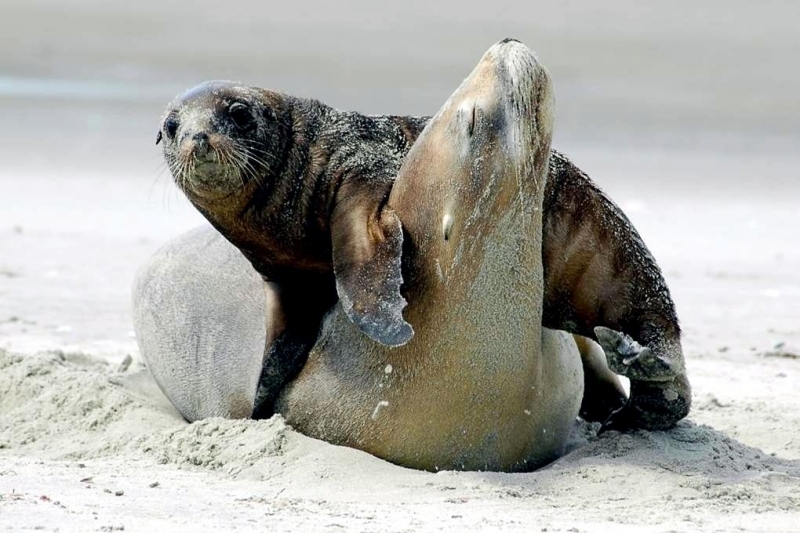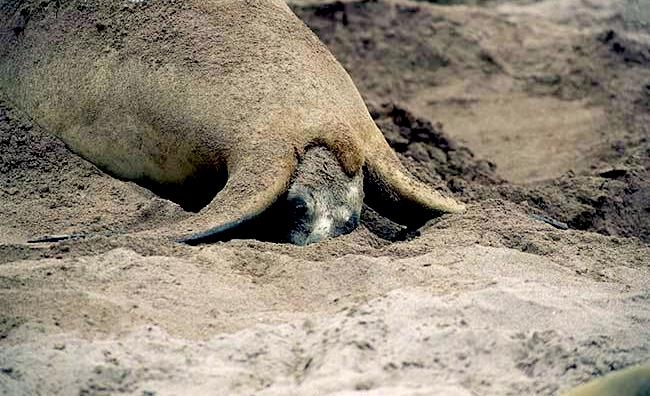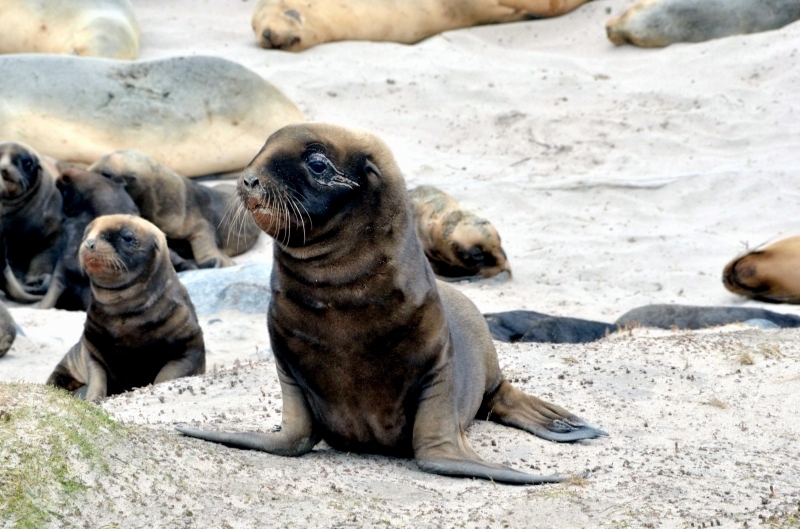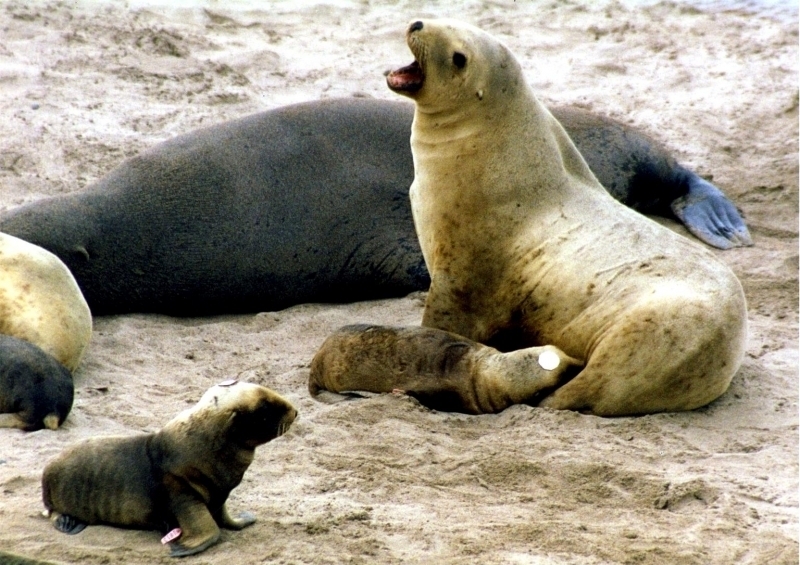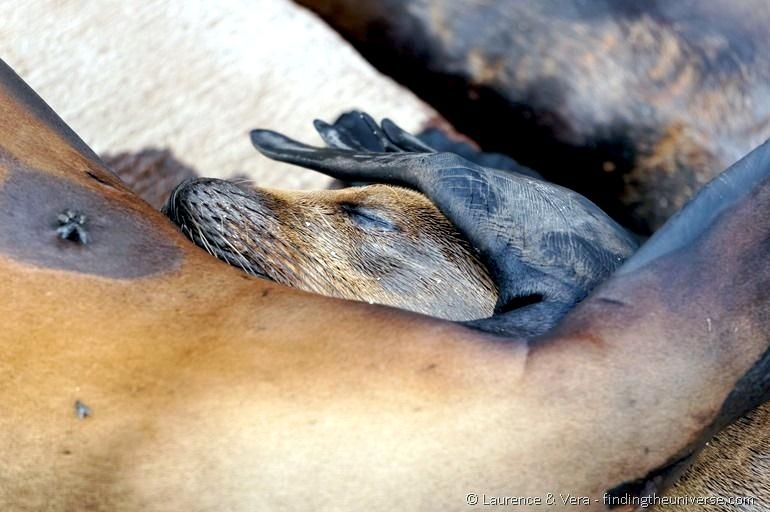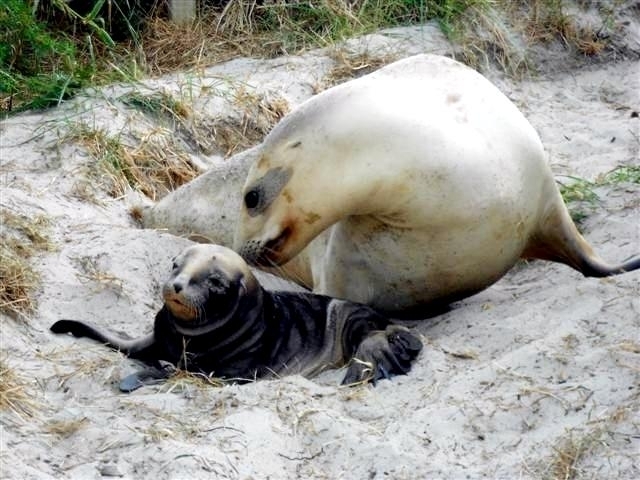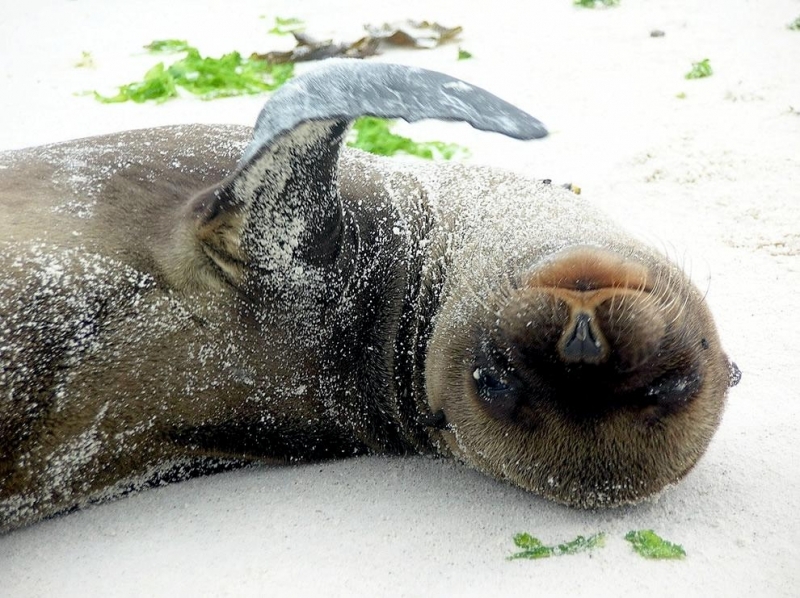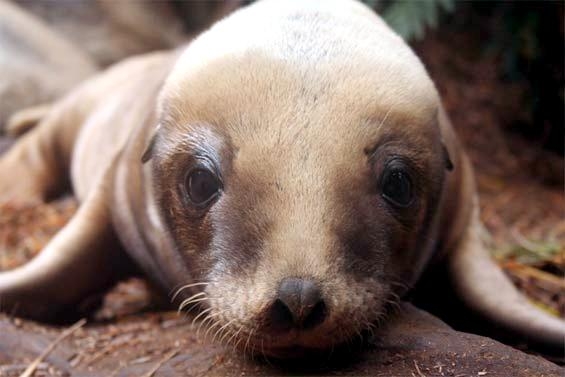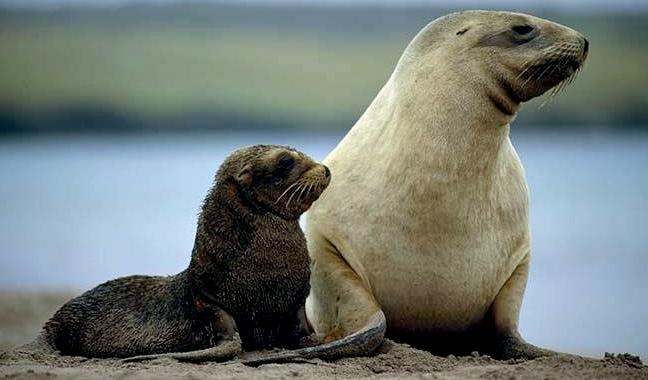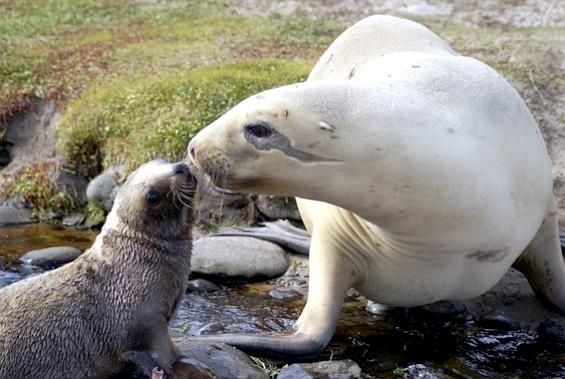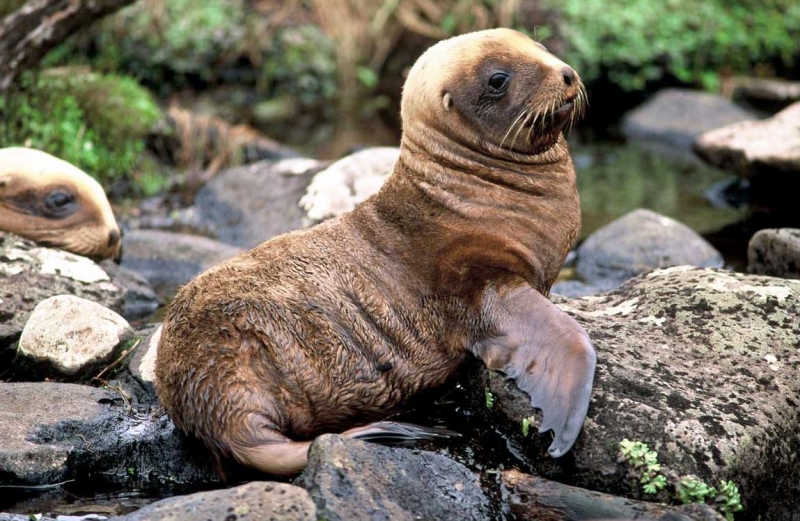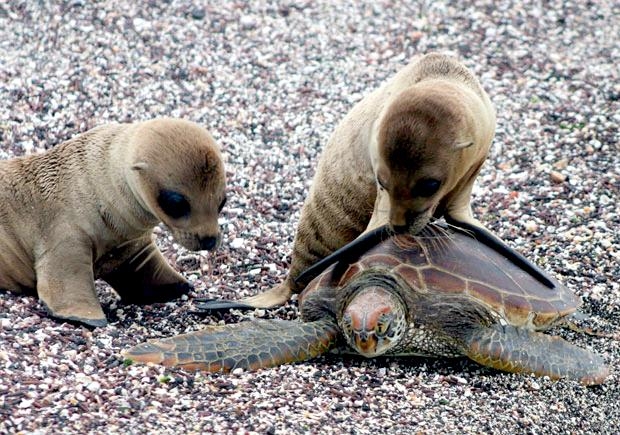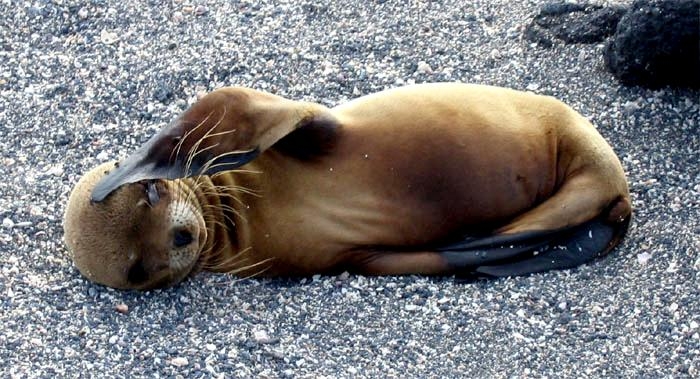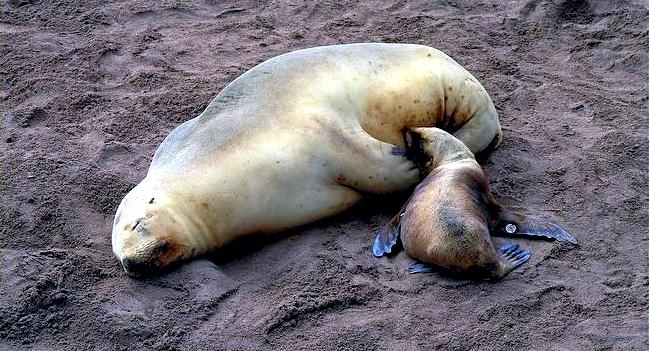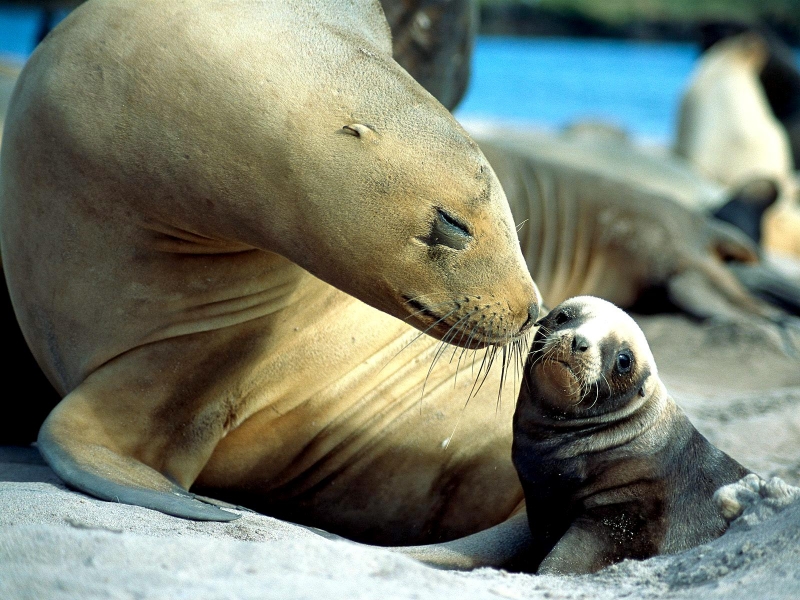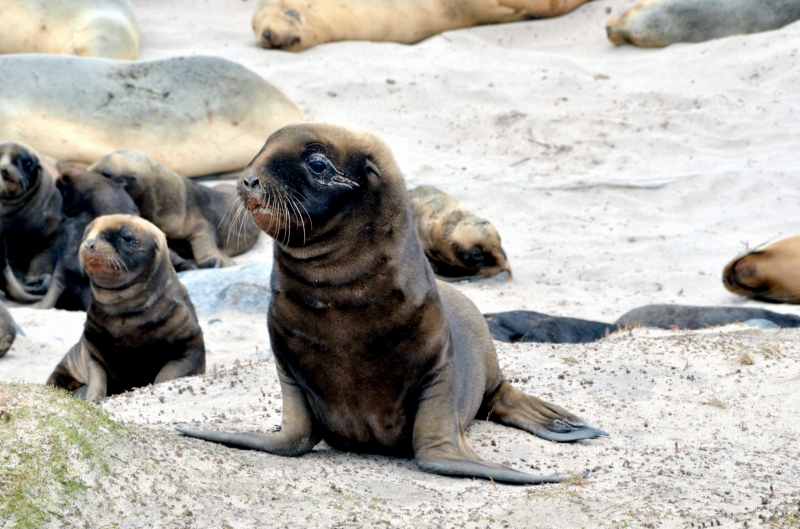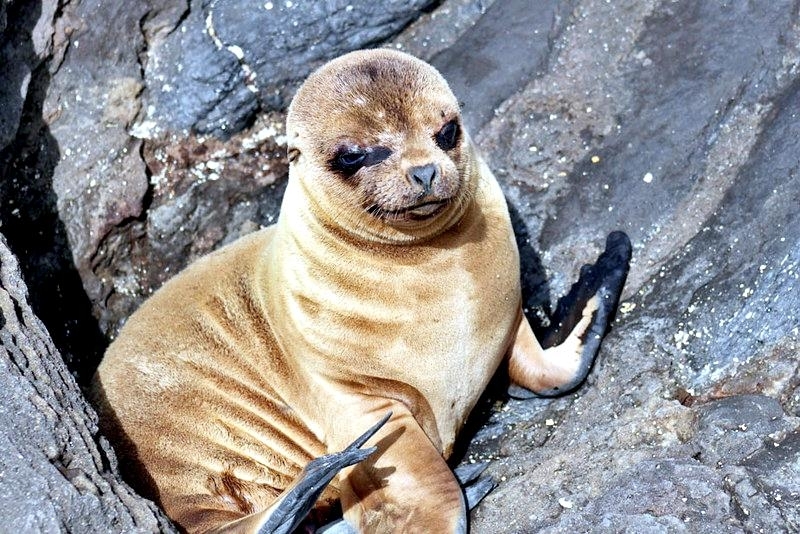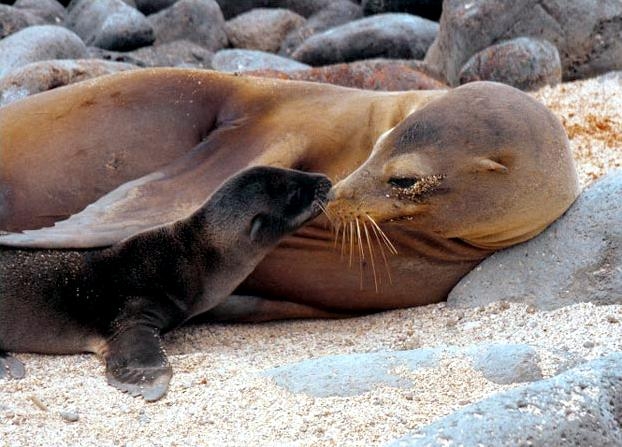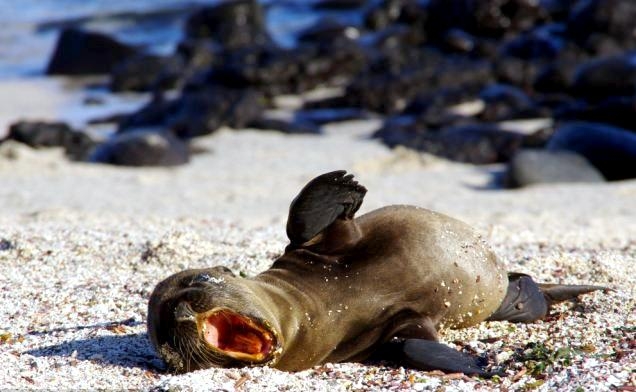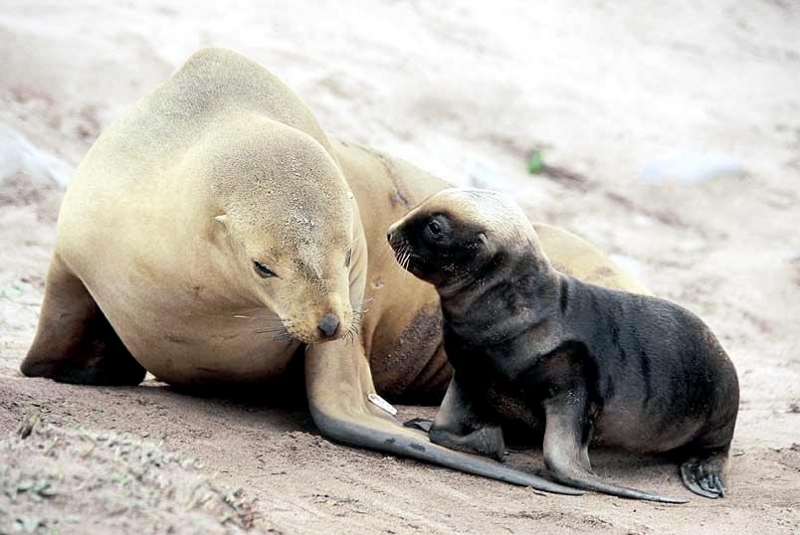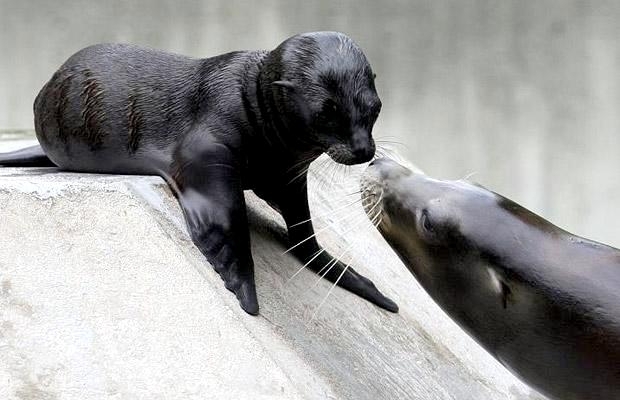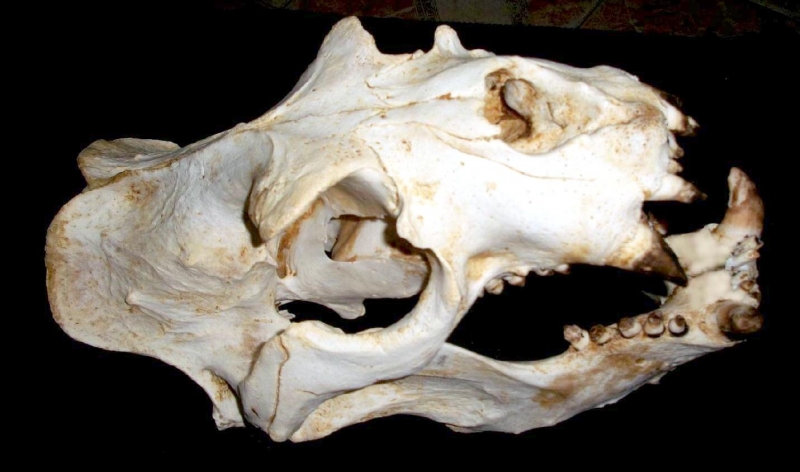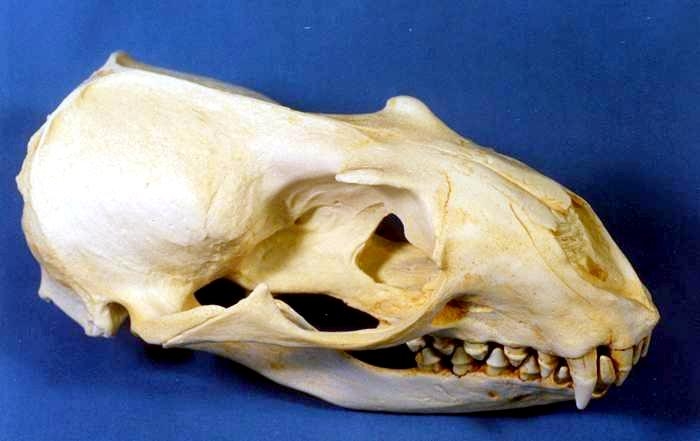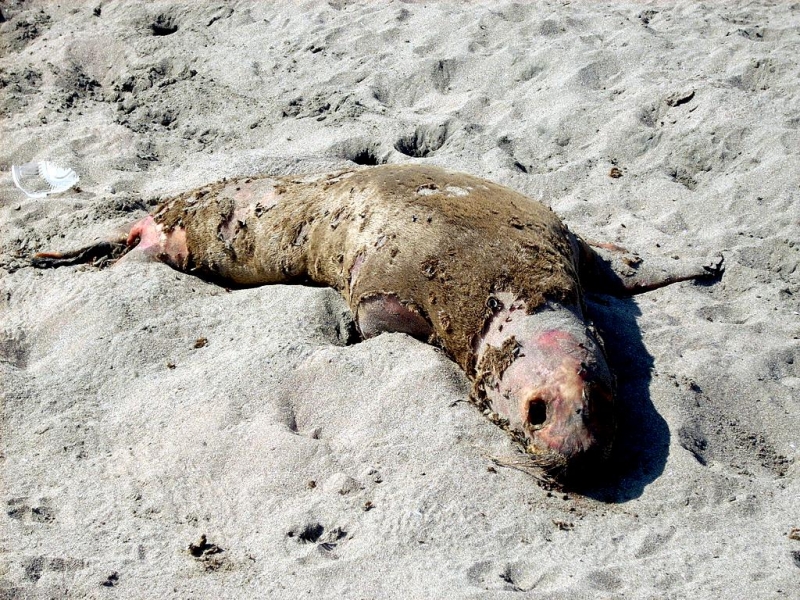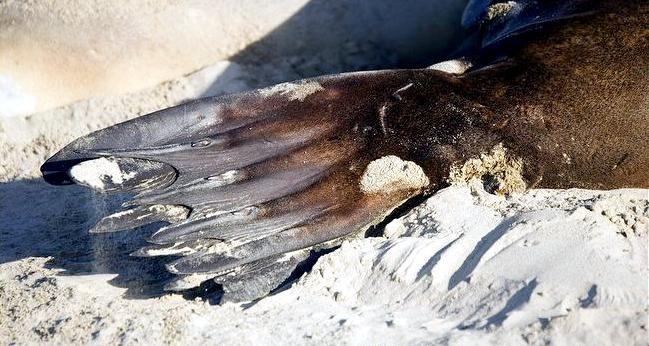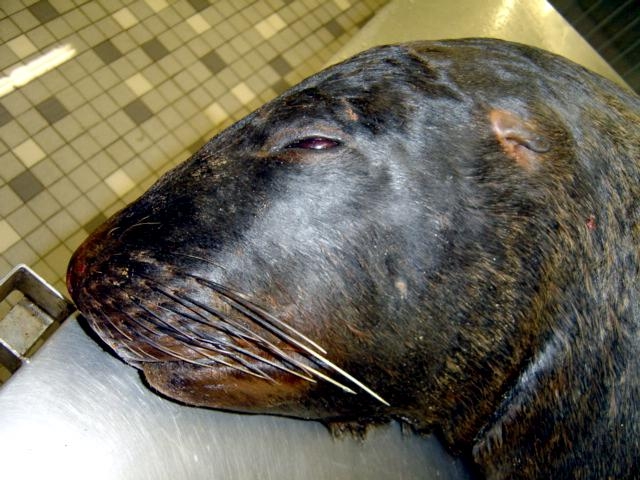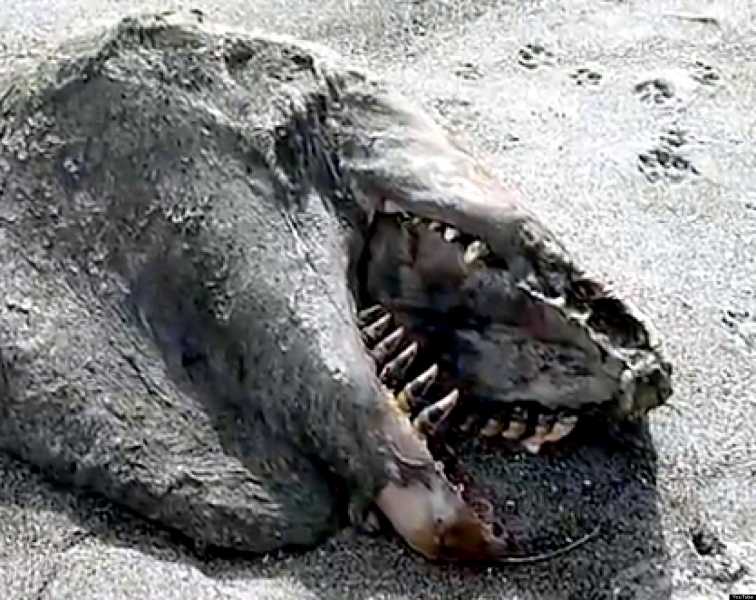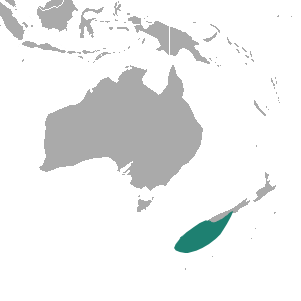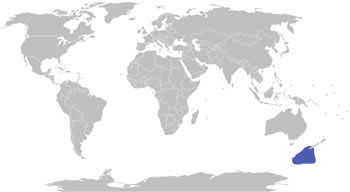“Phocarctos hookeri”
New Zealand Sea Lions also known as Hooker’s Sea Lions and “whakahao” in Māori, the New Zealand native people, are one of the rarest and most endangered of the pinniped family. Males measure between 2.0-3.25 meters in length and weigh 300-450 kilograms, while adult females measure 1.6-2 meters in length and weigh up to 160 kilograms. Adult females are a creamy-gray color and males are typically dark brown to black. New Zealand Sea Lions breed almost exclusively on New Zealand’s sub-antarctic islands, primarily on Dundas Island in the Auckland Islands where 3 colonies make up 95% of the total pup production that are less than 7 kilometers apart. They haul-out between the Australian sub-antarctic Macquarie Island and the southeast coast of South Island of New Zealand. Individuals are also occasionally seen on New Zealand’s North Island. Prior to a mass mortality of New Zealand Sea Lions in 1998, the total population was estimated at 12,000-14,000. New Zealand Sea Lions prefer sandy beaches for both haul-out & breeding. They often wonder inland, sometimes as far as 2 kilometers for reasons currently unknown.
Migratory patterns of New Zealand Sea Lions are not well-known. They are opportunistic feeders with a diet of cephalopods, crabs, crayfish and fish. Adults are able to dive repeatedly to 300 meters and have been known to dive to over 600 meters. They have been known to travel up to 130 kilometers offshore during feeding trips. Males may live as long as 23 years, females as long as 18 years. They will eat penguins and adult male New Zealand Sea Lions have been observed feeding on New Zealand Sea Lion pups. Great White Sharks & Killer Whales prey on adults and pups. Females sexually mature at 3-4 years of age, males at 5 years, however males do not begin breeding until at least 8 years of age. Breeding season takes place between November and January. Pups are born measuring 70-100 centimeters in length, weighing 7.9 kilograms. Bulls begin arriving in November to fight for territory before the females arrive a few weeks later. Successful New Zealand Sea Lion bulls establish territories consisting of between 8-25 females. The females give birth shortly after arriving, then mate 7 to 10 days later. Pups are born with a thick coat of light to dark brown fur. About 10-14 days after a pup is born, females return to sea to feed then return to land for 2-3 days to nurse. This feeding cycle continues for about 8-12 months. At 2-3 weeks of age, New Zealand Sea Lion pups begin to swim. Adult males remain ashore and do not normally feed during breeding season. Molting follows breeding season in late February through to early May.
